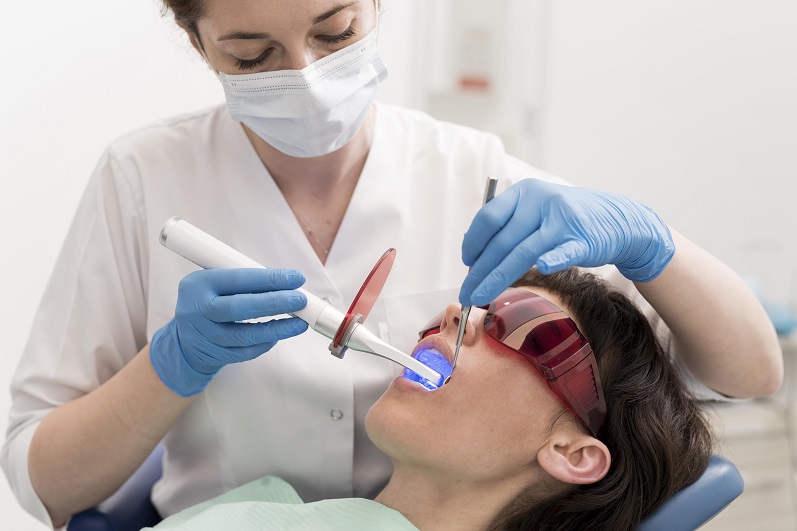A gum abscess may be an easy diagnosis to make, but it’s important to remember that it can be caused by a number of different problems, so not all gum abscesses are treated the same way. Whether you’re trying to determine whether or not you should get treatment depends on several factors such as the size and location of your gum abscess, your overall health, and how painful the abscess is. A local dentist can help you figure out if gum abscess treatment is right for you or if there’s another option that’s better suited to your needs.
How does gum abscess happen
Gum abscess is caused by an infection from bacteria in your mouth. The infection can be caused by: poor oral hygiene, untreated dental problems like cavities or damaged fillings, root canal work or tooth surgery. It’s important to get help right away because gum abscesses left untreated can spread to other parts of your body, including your heart and lungs. If you experience symptoms such as pain and swelling near a tooth, loose teeth or bad breath you should see your dentist right away. Getting treated early could keep other serious conditions from happening.
What are the signs and symptoms of a gum abscess
The most noticeable sign of a gum abscess is pain and tenderness in and around one or more teeth. In addition, you may have difficulty chewing and experience swelling in your cheek or jaw. If there is an open wound near your tooth, you may notice drainage of pus at its edges. Another potential sign of gum disease is bad breath that doesn’t go away with brushing or flossing twice daily. Bad breath can result from many conditions, but if it persists over time, ask your dentist to test for underlying infections. Another condition that can cause bad breath is dry mouth (xerostomia), which may be caused by medications such as antidepressants, low-carb diets, smoking or Sjogren’s syndrome.
How can you avoid getting an abscess in the future
Your best chance of avoiding gum disease, including abscesses, is by taking great care of your teeth and gums from an early age. Brush twice daily with fluoride toothpaste (this is especially important for kids), floss regularly and visit your dentist every six months for professional cleanings and checkups. If you already have gum disease or have had an abscess in the past, see your dentist at any sign of further problems as treatment is necessary to avoid complications such as further abscesses or gum disease that may lead to tooth loss. Many people are scared of needles, but modern local anesthesia can make even dental procedures involving needles almost painless—and it’s well worth it to get on top of these problems before they get worse!
Do you really need to see a dentist for this?
Gum abscesses are caused by tooth decay and/or gum disease, so if you don’t have either of these problems, it’s usually safe to try treating them yourself. You can ask your dentist for antibiotics and pain relievers in case you need to treat your gum abscess at home. If you do decide to go see a dentist, get an evaluation from him or her before getting a treatment. Your dentist may be able to identify which infection is causing your gum abscess and prescribe medication specific to that type of infection. Once it’s established that there is an actual abscess present (as opposed to swelling from irritation), most dentists will remove it in one of two ways: drainage or incision and drainage.
What happens if you don’t treat it
Your dentist can open up an abscessed tooth and drain it of pus; if left untreated, abscesses in your mouth can become infected and spread through your body, so it’s best to head over to your dentist as soon as possible if you have symptoms. Many people don’t realize they have an infection until other health problems arise—abscesses can sometimes cause fever or swollen lymph nodes, for example—but once you do notice symptoms, make sure you seek out treatment from a professional instead of trying to treat it yourself.
Who should get treatment
If you have a gum abscess that is causing pain, you should see your dentist or doctor. If you can’t reach either of them, head to an emergency room or urgent care clinic. Your treatment will depend on how severe your abscess is and whether it is active. For example, if there’s pus in your mouth, oral antibiotics are likely needed—and fast! Deep ones may need incision and drainage by a health professional. Active infections (meaning they cause pain) may require medical intervention—especially if they’re large.
Where should you go
A doctor can treat and remove abscesses that form in or around teeth, as well as under gums where gingival abscesses develop. Gum disease, tooth decay, and injury can also cause abscesses. When these occur near teeth, a primary concern is preventing them from spreading into tooth pulp by limiting their size. Once an abscess forms under a gum or other soft tissue, it’s generally best for dentists to drain it because drainage prevents damage to healthy tissue. Some treatments for gum diseases include scaling and root planing (tooth cleaning). The procedure removes plaque, tartar buildup and any deposits that may be causing inflammation in gum tissues.
How much will it cost
Going to a doctor for gum abscess treatment usually costs between $35 and $250. However, if you have dental insurance, your cost may be significantly less.




